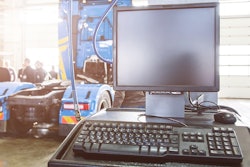
In the equipment and parts business, support teams are overwhelmed by a question that never seems to go away, “What part do I need?”
Technicians, customers and dealers call or email constantly, trying to identify a part from a blurry photo, a half-remembered name, or a 20-year-old manual. Your team stops what they’re doing to help, again and again.
Today we investigate the hidden operational cost of manual parts identification, why it’s scaling out of control and how distributors can turn this service bottleneck into a digital advantage. The solution is simple, give customers the tools to find what they need themselves.
The problem
Your support team isn’t lazy. They’re overwhelmed. It’s not their fault that most of your manuals live in PDFs or binders. It’s not the customer’s fault they can’t read part numbers scratched off a 10-year-old unit. But the result is always the same:
- Interruptions to critical internal projects
- Delays in customer service response times
- Lost revenue while the customer waits (or goes elsewhere)
[RELATED: Is friction in your ordering process costing you business?]
If your team is answering the same parts question 300 times a week, it’s not a service win, it’s a business systems failure. And it’s only getting worse. As your installed base grows and customers expect 24/7 access to solutions, your ability to scale service depends on one thing: reducing the volume of questions that shouldn’t require a human response in the first place.
The hidden cost of “What part do I need?”
Let’s talk about what this is really costing you.
- Time: Five minutes here, 10 minutes there. Multiply that by hundreds of calls per week, across support, engineering and sales teams.
- Customer confidence: When customers get inconsistent answers or have to wait hours, they question your reliability.
- Team burnout: Your best people didn’t sign up to answer the same question on repeat. It wears them down.
And here’s the real kicker. Every time you answer that question for someone else, you’re training them to come back to you instead of helping themselves. That’s not customer service, it’s customer dependence.
The opportunity
Interactive Parts Manuals (IPMs) put your knowledge in your customer’s hands — without a call, a ticket or a delay. With an IPM module, customers can:
- Search for equipment by serial number or model
- Zoom into exploded views of parts diagrams
- Click directly on what they need to view specs, availability, and pricing
- Add to cart and order in seconds
With IPMs, you’re not just improving efficiency, you’re giving your customers control. And when customers feel empowered, they come back. They buy more. They stop calling just to ask. This is how you scale support. Not by hiring more reps, but by making your existing knowledge work harder — digitally.
What to do next
If your team is answering the same part ID question over and over again, you don’t need more headcount. You need a better system. Start with this:
- Ask your support team: What questions do we answer more than 100 times a month?
- Look at your call logs: How many of those could’ve been solved with a click?
- Ask yourself: What would happen to our revenue and service satisfaction if customers helped themselves 24/7?










